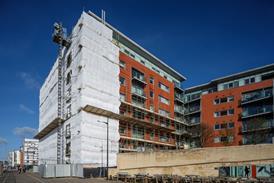- Home
- Content Hub
- News and updates
- Magazine
- Events
 The Trust Registration Service update: What you need to know in practice (Online, Tues 27 Jan 2026)
The Trust Registration Service update: What you need to know in practice (Online, Tues 27 Jan 2026) Law Society Property Conference 2025 (Wednesday 15th October 2025, London)
Law Society Property Conference 2025 (Wednesday 15th October 2025, London) Law Society Private Client Conference 2026 (Tuesday 19th May 2026, Hybrid)
Law Society Private Client Conference 2026 (Tuesday 19th May 2026, Hybrid) Law of Property Act 1925: Celebrate 100 years and develop your network (Thurs 24th April 2025, London)
Law of Property Act 1925: Celebrate 100 years and develop your network (Thurs 24th April 2025, London)
- Practice areas
- About us
- Join the section
Playing it safe
By Charis Beverton and Sarah Grant2024-09-24T00:00:00

The recent Leasehold and Freehold Reform Act 2024 amends the Building Safety Act to allow for further rights of recourse. Charis Beverton and Sarah Grant outline the key changes
This is premium content
In order to access this content you must be a member of the Property Section and logged in.
If you have not registered before, register now to gain access to this content. You must use the email associated with your section membership.
Log inNot a Property Section Member?
Join nowif you require assistance with joining this section, please email us at msadmin@lawsociety.org.uk or call us on 0207 320 5804
More from the Law Society
- © The Law Society 2024. All rights reserved.
- Cookies
- Privacy policy
- Accessibility
- Legal notice
Site powered by Webvision Cloud










